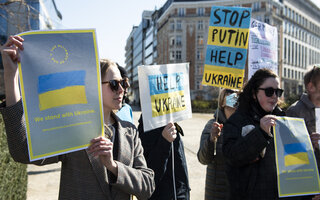Policy Article
Beyond relocations and secondary movements: Enhancing intra-EU mobility for refugees
Authors
Publication Date
Key Words
Related Topics
Migration
European Union & Euro
Europe
Excerpt from the Introduction
Questions concerning the mobility of refugees within the EU have acquired new salience since the activation of the Temporary Protection Directive (TPD) in March 2022. While already enjoying visa-free travel across the EU, beneficiaries of temporary protection who escaped from the war in Ukraine have been able to enjoy their status and rights everywhere in EU territory from day one of the TPD’s activation. This de facto free-movement regime afforded to displaced Ukrainians is, in the eyes of many, one of the key advantages of the EU response to Ukraine’s humanitarian emergency. It has enabled beneficiaries of temporary protection to reunify with their family members abroad and seek jobs anywhere in the EU. This, commentators argue, facilitates socioeconomic inclusion. By avoiding contentious debates on relocations and responsibility sharing, it has also enabled EU countries to display a rare degree of unity on asylum matters.
This liberal ‘free-choice’ model stands in marked contrast to the limited intra-EU mobility rights afforded to all other refugees and beneficiaries of subsidiary protection (hereafter referred to as protection holders or refugees without distinction). Only after five years of legal residence and by meeting additional income-related requirements set by the Long-term Residents Directive (LTRD or ‘Directive’) are other refugees allowed to move to a country different from that of their residence—in most cases the country responsible for their asylum application under the Dublin system.




